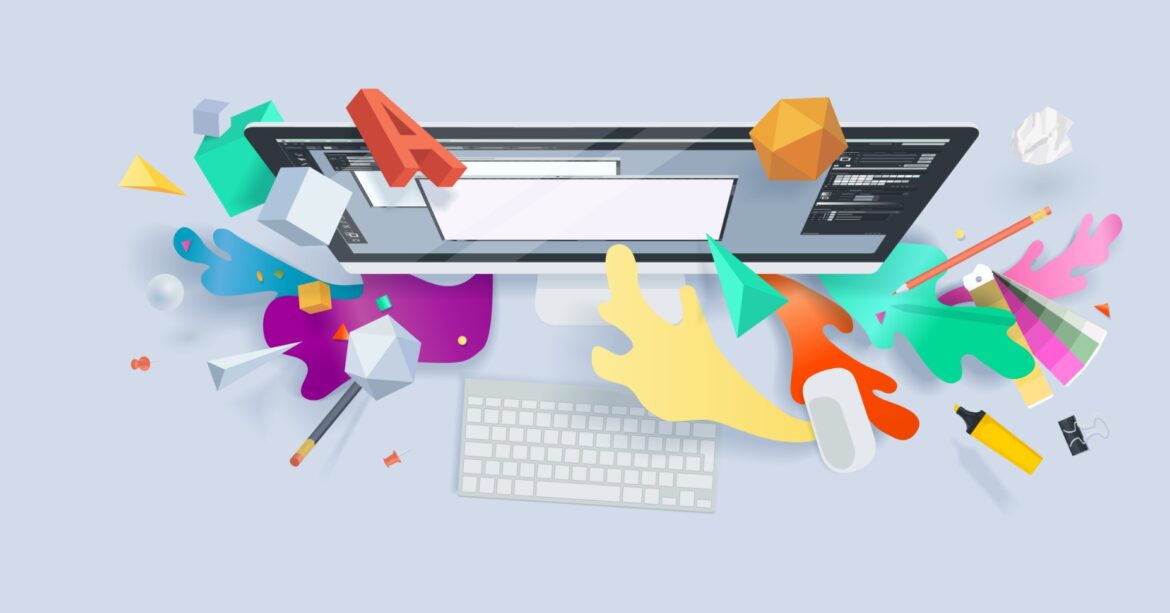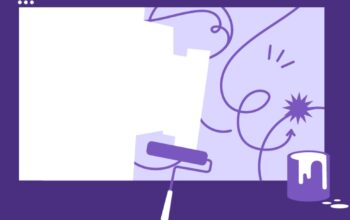In today’s fast-paced digital world, web design has evolved to incorporate more interactive and visually appealing elements. One such element that has gained significant popularity is 3D design. With its ability to bring depth, realism, and interactivity to websites, 3D design has become a powerful tool in the hands of web designers. If you’re looking to embark on a journey of incorporating 3D into your web design projects, this article is here to guide you through the process. From understanding the basics to implementing advanced techniques, we’ll cover it all. So, let’s dive in!
The Fundamentals of 3D in Web Design
What is 3D design?
3D design refers to the creation of three-dimensional objects or environments using specialized software tools. It involves the use of various techniques to render depth, texture, and lighting effects, resulting in a realistic representation of the virtual objects. In the context of web design, 3D elements can be incorporated into websites to enhance user engagement and create immersive experiences.
Why should you consider using 3D in web design projects?
Incorporating 3D design into your web projects offers numerous benefits. It allows you to –
- Enhance visual appeal – 3D elements add depth and realism to your designs, making them visually striking and captivating for users.
- Improve user engagement – Interactive 3D elements can significantly enhance user engagement by providing unique and immersive experiences.
- Stand out from the competition – With 3D design, you can differentiate your website from others, leaving a lasting impression on visitors.
- Convey complex information – 3D models can be used to represent intricate concepts or products, making it easier for users to understand and interact with them.
Getting Started with 3D in Web Design
Familiarize yourself with 3D design tools
To get started with 3D design, you’ll need to become familiar with the tools and software used in the industry. Here are some popular choices –
- Blender – An open-source 3D creation suite with a wide range of features and a supportive community.
- SketchUp – A user-friendly 3D modeling software suitable for beginners.
- Cinema 4D – A professional 3D software widely used in the motion graphics and visual effects industry.
Understand the principles of 3D design
Before diving into complex projects, it’s essential to grasp the fundamental principles of 3D design. Familiarize yourself with concepts such as –
- Modeling – Creating 3D objects using various techniques like polygonal modeling, sculpting, or parametric modeling.
- Texturing – Applying realistic textures and materials to 3D models to enhance their visual appearance.
- Lighting – Understanding how light interacts with objects to create realistic shadows, reflections, and highlights.
- Rendering – The process of generating a final image or animation from a 3D scene.
Start with simple 3D elements
As a beginner, it’s advisable to start with simple 3D elements and gradually progress to more complex projects. Here are a few ideas to get you started –
- 3D logos – Create a 3D version of your website’s logo to add depth and visual interest.
- Product showcases – Display your products in 3D to provide users with a realistic representation.
- Infographics – Present complex information through interactive 3D infographics that engage users.
Optimize your 3D assets for the web
When incorporating 3D elements into web design, it’s crucial to optimize your assets for the web to ensure fast loading times and optimal performance. Consider the following optimization techniques:
1. Reduce Polygon Count
One of the primary factors that affect the performance of 3D assets is the polygon count. Higher polygon counts require more computational power to render, resulting in slower loading times. To optimize your 3D assets, reduce the polygon count by:
- Using efficient modeling techniques.
- Removing unnecessary details and subdivisions.
- Using polygon simplification tools.
2. Texture Optimization
Textures play a vital role in enhancing the visual appeal of 3D models. However, large texture files can slow down web page loading times. To optimize textures:
- Compress textures using image compression algorithms like JPEG or PNG.
- Use texture atlases to combine multiple textures into a single image.
- Adjust texture resolutions based on the importance of the asset in the scene.
3. Level of Detail (LOD)
Level of Detail (LOD) is a technique used to optimize 3D assets by displaying lower-polygon versions of models at a distance. This technique reduces the strain on resources while maintaining visual quality. To implement LOD:
- Create multiple versions of the same model with varying polygon counts.
- Switch to lower-polygon versions as the distance between the camera and the model increases.
- Use LOD libraries or tools provided by 3D software for seamless transitions.
Now, let’s illustrate these optimization techniques using a table:
| Optimization Technique | Description |
| Reduce Polygon Count | – Use efficient modeling techniques. – Remove unnecessary details and subdivisions. – Utilize polygon simplification tools. |
| Texture Optimization | – Compress textures using image compression algorithms. – Combine multiple textures into a single image using texture atlases. – Adjust texture resolutions based on importance. |
| Level of Detail (LOD) | – Create multiple versions of the same model with varying polygon counts. – Switch to lower-polygon versions based on distance. – Utilize LOD libraries or tools for seamless transitions. |
By implementing these optimization techniques, you can ensure that your 3D assets load quickly and perform smoothly on the web, providing users with a seamless and engaging experience.
Frequently Asked Questions
Q – How long does it take to learn 3D design for web projects?
A – The time required to learn 3D design depends on various factors, including your prior experience, dedication, and the complexity of the projects you aim to undertake. With consistent practice and learning, you can start creating basic 3D elements within a few weeks or months.
Q – Can I use 3D design in responsive web design?
A – Yes, 3D design can be seamlessly integrated into responsive web design. By using modern CSS techniques and frameworks like Flexbox or CSS Grid, you can ensure that your 3D elements adapt to different screen sizes and maintain their visual appeal across devices.
Q – Are there any performance considerations when using 3D in web design?
A – Yes, performance optimization is essential when incorporating 3D elements into web design. To ensure smooth performance, consider optimizing your assets, reducing polygon counts, and implementing techniques like LOD and texture compression.
Q – Are there any alternatives to 3D design for creating interactive web experiences?
A – While 3D design offers unique possibilities, there are alternative techniques to create interactive web experiences. These include 2D animations, parallax scrolling, and CSS-based effects. The choice depends on the specific requirements of your project.
Q – Where can I find 3D assets for my web design projects?
A – There are various online platforms where you can find 3D assets for your web design projects. Some popular options include websites like Sketchfab, TurboSquid, and CGTrader, which offer a wide range of free and premium 3D models.
Q – What are some best practices for integrating 3D elements into web design?
A – Here are some best practices to consider –
- Optimize your 3D assets for performance.
- Ensure cross-browser compatibility.
- Test your 3D elements on different devices.
- Provide fallback options for devices that don’t support 3D rendering.
Incorporating 3D elements into web design projects can elevate your designs to new heights, providing a visually appealing and immersive experience for users. By following the tips and techniques outlined in this article, you can confidently get started with 3D in web design. Remember to familiarize yourself with the necessary tools, understand the principles of 3D design, start with simple projects, and optimize your assets for the web. With practice and creativity, you’ll be able to create stunning 3D web designs that captivate and engage your audience.




